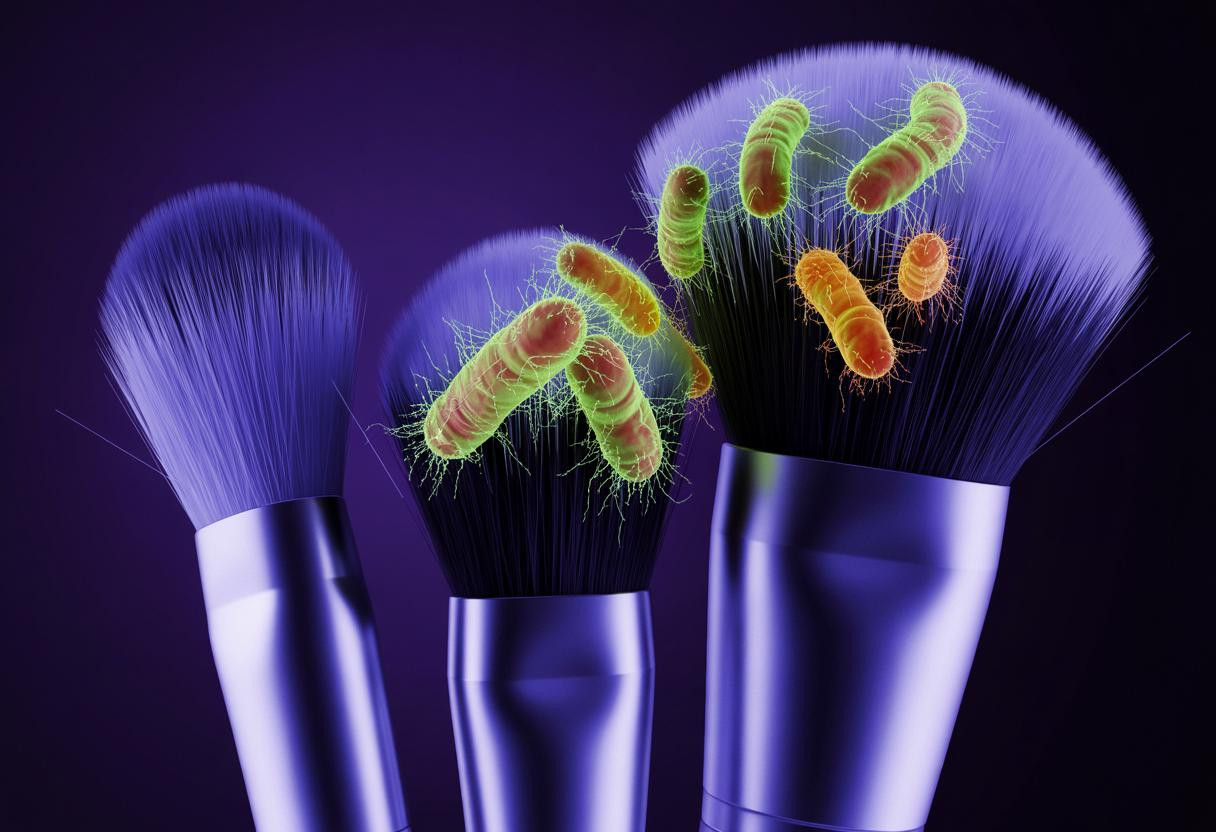Your expired makeup brushes are harboring an invisible army of dangerous bacteria that could be wreaking havoc on your skin right now. Recent forensic analysis reveals that these seemingly innocent beauty tools contain 11 million colony-forming units of bacteria – making them 20,000 times dirtier than the average toilet seat.
What’s particularly alarming is that 97.9% of women use expired makeup products, unknowingly feeding these microscopic ecosystems that thrive in the warm, moist environment of cosmetic applicators.
The hidden bacterial landscape living in your beauty routine
Scientists have identified a complex microbial community flourishing in expired makeup brushes, dominated by potentially harmful organisms including Staphylococcus aureus, Pseudomonas aeruginosa, and various fungal species. These pathogens don’t just sit passively on brush fibers – they actively form biofilms that resist standard cleaning methods.
Sponges present an even more concerning scenario, with studies showing 70% contamination rates for fungal species like Aspergillus and Candida. The porous structure of beauty blenders creates perfect breeding grounds where moisture retention enables rapid microbial proliferation.
What makes this particularly insidious is how harmful effects of antibacterial products on beneficial microbes can disrupt your skin’s natural protective barrier, making contaminated brushes even more dangerous.
Why your skin becomes vulnerable to these invisible threats
The direct pathway from brush to breakout
Every time you use a contaminated brush, you’re essentially inoculating your skin with millions of bacteria. Staphylococcus aureus was found in 79% of expired mascara samples, directly correlating with increased rates of folliculitis and persistent acne in users.
The risk becomes exponentially higher for mature skin, as aging skin becomes vulnerable to bacterial infections due to decreased barrier function and slower cellular turnover.
Material science reveals the perfect storm
Natural fiber brushes create microscopic pockets where bacteria can establish permanent colonies. Unlike synthetic alternatives, these organic materials provide nutrients that sustain microbial growth for months. Gram-positive bacteria constitute 72% of brush contamination, with biofilm formation making them nearly impossible to eliminate through conventional cleaning.
Synthetic brushes, while slightly better, still harbor dangerous levels of contamination, particularly when used with products containing toxic chemicals that accumulate in everyday products.
Breaking the contamination cycle with targeted strategies
The 72-hour replacement rule
Professional makeup artists are increasingly adopting disposable applicators for client work, recognizing that even daily cleaning cannot eliminate established biofilms. For personal use, replacing sponges every 72 hours of active use dramatically reduces bacterial load.
UV-C sanitization protocol
Portable UV-C devices can eliminate 99.9% of surface bacteria in just 60 seconds. This technology targets the DNA of microorganisms, preventing the resistance issues associated with chemical sanitizers.
Professional insights for immediate protection
Dermatologists recommend a natural approach to beauty routines that includes weekly deep-cleaning protocols using gentle, antimicrobial cleansers.
The most effective prevention strategy involves treating brushes like medical instruments – sterilizing between uses and replacing frequently rather than attempting to salvage contaminated tools.
The microscopic reality hiding in plain sight
Your makeup routine may be sabotaging your skin health in ways you never imagined. The invisible bacterial ecosystems thriving in expired brushes represent a significant but entirely preventable health risk that requires immediate attention and strategic intervention.
